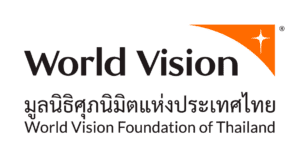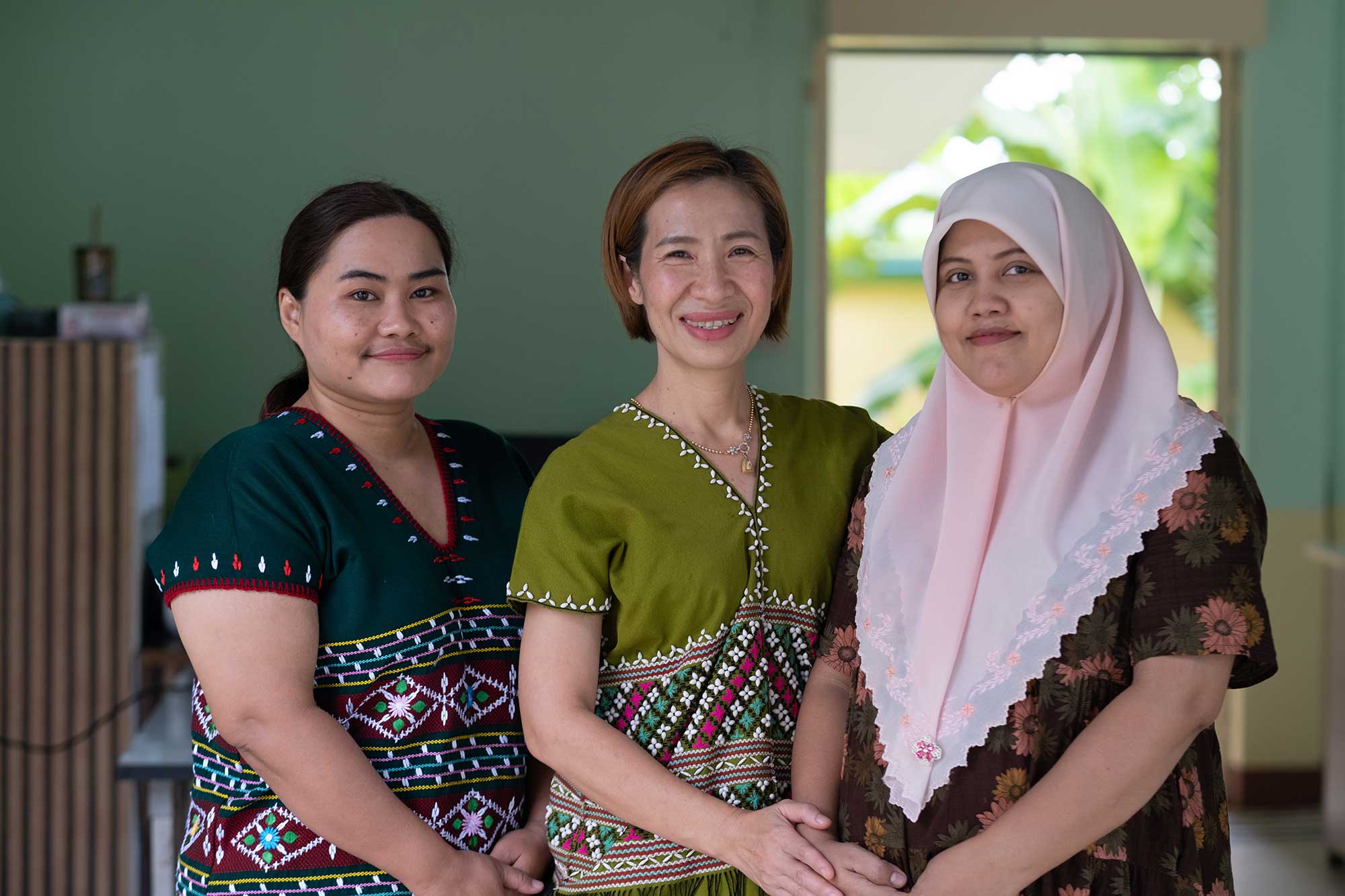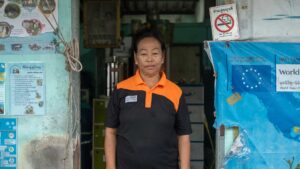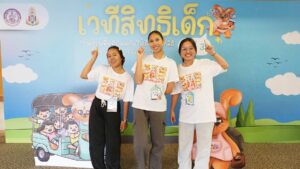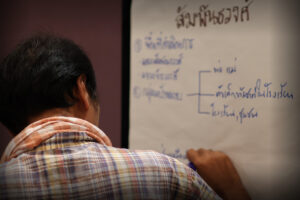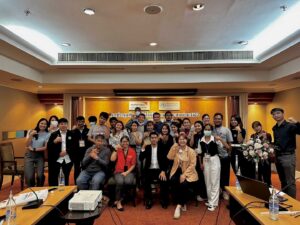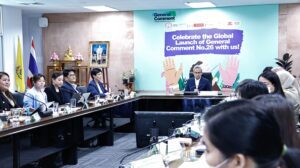Thailand provides universal health coverage (UHC) for Thai nationals under the National Health Security Act. Regular migrant workers in Thailand can access health coverage through their social security contributions or by purchasing migrant health insurance, but various barriers prevent uptake. As noted in the World Health Organization and Ministry of Public Health Joint mission to review health system capacity in addressing migrant health needs in Thailand report, despite the progress made for migrant inclusiveness in health care services, the health system in Thailand faces numerous challenges, particularly in providing health coverage for migrants. For the estimated 1-2 million irregular migrants, including undocumented workers and their dependents, additional barriers make accessing health care particularly difficult, leaving many reliant on civil society organizations.
Mae Sot’s Model for Universal Health Coverage
Mae Sot, the largest border town between Thailand and Myanmar, has established a model that extends free primary care to migrants, regardless of their status. This model has been achieved through collaboration between Mae Sot Hospital and a range of local government and civil society organizations, including World Vision Thailand, Dreamlopments Foundation, International Rescue Committee, Shoklo Malaria Research Unit, Mae Tao Clinic, International Organization for Migration and others.
Under Mae Sot Hospital, a community health center provides primary care, child immunizations, antenatal care, and family planning support to migrants. Doctors and nurses deliver clinical care, while migrant health volunteers (MHVs) conduct outreach focused on disease control and prevention education. These volunteers play a crucial role in engaging with the community and encouraging the use of health services.
The Madinah Community Health Center team includes Weeraya Sinporn as Thai Head Nurse, a Burmese nurse, and five Thai community health officers (CHOs) who also speak Burmese and Karen. Weeraya notes the importance of cultural connection, explaining that “the CHOs understand the culture and language of the Karen community which is really important for building trust.” She wears traditional Karen clothing to show inclusivity, stating, “I am Thai, but I wear this blouse to show that everyone is welcome here.”
World Vision Thailand’s Support for Capacity Expansion
Originally established in 2004 the health center was small, cramped, and located on a busy road where families had to wait for services. With support from the Global Fund, Raks Thai Foundation and World Vision Thailand, the health center relocated to a safer, more spacious building in 2024, increasing its capacity to serve the increasing number of migrants fleeing conflict in Myanmar. The health center treats approximately 8,000 migrants annually, with the number expected to increase with the expanded facilities and as more people cross the river that separates Myawaddy and Mae Sot.
Services Offered and Preventive Care Focus
The health center offers primary care and contraceptive services five days a week, and provides child immunizations on Tuesdays and antenatal care on Wednesdays. This includes both individual appointments for pregnant mothers and their husbands and group classes where women can openly discuss their pregnancies and receive advice. The space is also used for community events and education on maintaining a healthy environment. In Mae Sot, preventive care is prioritized. “We want to make sure people know how to do their best to not get sick amid their environment and circumstances. Immunizations, prenatal and antenatal care, and education around nutrition…that is our focus.”
When asked about the motivation behind providing universal coverage, Weeraya explains, “Good health is the foundation of all life’s necessities. If you are healthy, you can work to provide food, shelter, and clothing.”
World Vision Thailand’s Critical Role in Support and Mobile Clinics
World Vision Thailand supports Mae Sot in critical ways, including funding two mobile health clinics that provide care and immunizations to people in rural areas or those physically unable to travel to the health center. These mobile clinics extend healthcare access to isolated communities and help ensure that critical vaccinations reach remote populations. Additionally, World Vision Thailand offers individual treatment support on a case-by-case basis, stepping in when migrants face barriers to accessing hospital services.
Weeraya recounts a story of a young pregnant girl who tested positive for HIV but couldn’t access treatment because she was undocumented. “We contacted World Vision Thailand and they provided the support needed,” Weeraya says. The timely intervention ensured that the girl could receive proper care, highlighting World Vision Thailand’s role as a lifeline for migrants facing legal and financial barriers to treatment.
Community Support and Cross-Sector Collaboration
Weeraya highlights the public health benefits of universal health coverage, emphasizing “disease doesn’t discriminate” and that preventing illness on the Thai side of the border helps control its spread across the country. She asserts that replicating Mae Sot’s model in other towns across Tak district is straightforward, given the available resources and support from like-minded NGOs and civil society organizations, as well as the communities themselves. One of the known hurdles to achieving UHC for migrants can be convincing non-migrant populations that the investment is well-placed, but for border towns like Mae Sot, this is rarely a barrier.
“The migrant populations here are part of the community and have been for a long time,” Weeraya says. “We play a role in promoting better access to basic healthcare services for migrant populations. As the border area context, it is essential to enhance access to fundamental healthcare to ensure comprehensive disease prevention and control. This effort is part of enabling vulnerable groups to access health services more easily.”
A key aspect of Mae Sot’s UHC model is collaboration with organizations beyond the health sector, including working with NGOs focused on children’s rights, migrant rights, and education to expand health outreach efforts. For example, when the hospital or the health center want to host health prevention programs in the migrant learning centers, they collaborate with education-focused NGOs.
Challenges in Reaching Migrant Communities
One of the key challenges to providing health coverage has been overcoming cultural barriers. For example, misconceptions about contraceptives impeding women’s ability to work hard in some communities, have discouraged some from using these services. However, with further education on contraception and increased ease of access, cultural beliefs are shifting.
Similarly, some migrants remain unaware of the importance of childhood vaccinations or become skeptical if a normal post-vaccination fever occurs, but community outreach efforts and shared positive experiences have helped dispel misconceptions and build trust. The health center has found it particularly helpful to reiterate to migrant communities that they are providing the same immunization package that Thai children receive to stay healthy.
Another challenge is the high mobility of migrant workers, which disrupts continuity of care. Migrants often relocate for work, making it difficult for health clinics to maintain consistent contact.
Improved Health Outcomes and Community Trust
Since the implementation of free primary care, Madinah Community Health Center has seen marked improvements in health outcomes among migrant communities. Prior to the establishment of the health center, migrants would often forgo healthcare because they were unaware of where to go or lacked knowledge about their symptoms. People died from treatable diseases like tuberculosis or HIV because they did not know they should seek care or could not access it.
With the health center’s services now readily available, the community has a better understanding of their health needs and where to seek help. Migrants can now communicate symptoms in their native languages and receive care tailored to them. For example, a mother of six, who migrated from Myanmar as a child, has relied on the health center for antenatal and birth care, as well as her children’s healthcare. She expressed her gratitude for the free services, noting that hospital visits were previously impossible. She now actively spreads the word within her community, saying, “It’s great that people who can’t afford to pay can access health services here; I feel thankful for this center.”
In the past, many mothers in Mae Sot did not seek healthcare during pregnancy or immunize their children, but this has changed significantly. Weeraya explains that nurses now provide mothers with vaccine schedules for their babies after birth, and nearly all mothers adhere to these appointments. “It’s the normal thing to do now,”she adds, demonstrating the effectiveness of ongoing education efforts. The health center used to heavily rely on outreach vaccination programs throughout Mae Sot but these days, they only need these programs in rural areas like Phop Phra and Umphang.
The Role of Migrant Health Volunteers (MHVs)
Mae Sot has adapted the Thai Village Health Volunteer model to train MHVs from the community. These volunteers are essential in spreading awareness about available services and educating migrants on disease prevention. Ploy, a current health volunteer, explains,
“MHVs are vital because the health center and hospitals don’t have the staff or resources to reach everyone nor do they have the community connections that we do…[we] build trust and enable the health center to reach far more migrants.”
Weeraya also emphasizes that “MHVs serve as cultural bridges between health providers and the community, promoting trust and engagement.” While Mae Sot Hospital has a target number of MHVs to train annually, growing interest from the community has exceeded the available budget. World Vision Thailand has stepped in to cover the additional costs, helping expand the program.
Future Directions and Health Education Initiatives
Moving forward, the Madinah Community Health Center aims to improve its health education efforts through audiovisual media, as many migrants cannot read written materials. To do so, the team is hoping to acquire a TV and resources to create educational videos. Weeraya remains deeply motivated by her work, saying, “When I see the people I’ve helped get better and smile again, it makes my heart happy. That’s my motivation, that’s what drives me to do this work.”
